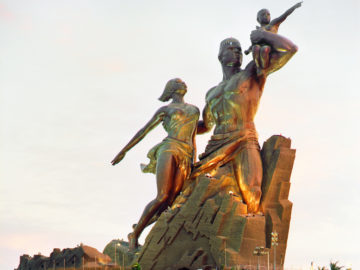Zoé Samudzi at Artforum:
 In his 2019 book Monuments of Power, Tycho van der Hoog notes that midcentury North Korean public art and architectonics differ from versions in the Soviet Union and China because of the “near total destruction of Pyongyang during the Korean War,” which “meant a tabula rasa for city planners.” The image of North Korea literally constructing itself from the rubble of devastating aerial bombing campaigns by the United States undoubtedly resonated with African nationalist leaders, who were also attempting to chart a course for their infant nations. And in supporting anti-imperialist movements in Asia, Latin America, and Africa through its modeling of “proletarian internationalism,” the state hoped to gain allies in the United Nations as it attempted to end US domination both within the institution and on the Korean peninsula. The Mansudae Overseas Project was opened in 1974 as a sub-bureau of the larger studio, tasked with creating statues as gifts to African states. (Countries are presently billed for the monuments because they are a critical source of earning the state foreign currency.)
In his 2019 book Monuments of Power, Tycho van der Hoog notes that midcentury North Korean public art and architectonics differ from versions in the Soviet Union and China because of the “near total destruction of Pyongyang during the Korean War,” which “meant a tabula rasa for city planners.” The image of North Korea literally constructing itself from the rubble of devastating aerial bombing campaigns by the United States undoubtedly resonated with African nationalist leaders, who were also attempting to chart a course for their infant nations. And in supporting anti-imperialist movements in Asia, Latin America, and Africa through its modeling of “proletarian internationalism,” the state hoped to gain allies in the United Nations as it attempted to end US domination both within the institution and on the Korean peninsula. The Mansudae Overseas Project was opened in 1974 as a sub-bureau of the larger studio, tasked with creating statues as gifts to African states. (Countries are presently billed for the monuments because they are a critical source of earning the state foreign currency.)
more here.
